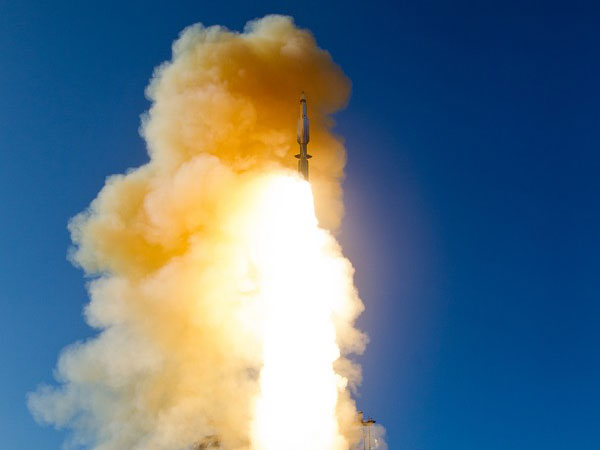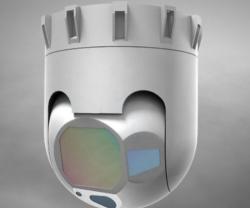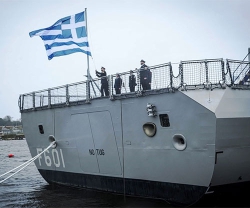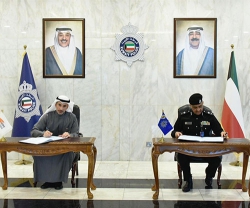The first guided missile successfully destroyed the target using the sheer kinetic force of a massive collision in space.
The SM-3 is a defensive weapon used by the U.S. and Japan to defend against short- to intermediate-range ballistic missiles.
“Confidence in the SM-3 Block IB's defensive capability continues to grow with each flight test. When this weapon deploys in 2015, the U.S. and our allies will have a tremendously reliable, capable defensive asset on their side,” said Dr. Taylor Lawrence, Raytheon Missile Systems President.
During the test, two SM-3 interceptors were launched at a single target consecutively. The first SM-3 eliminated the target. The second SM-3 was designed to test the ship weapons system's ability to launch multiple missiles at one time against a threat. An intercept for the second SM-3 was not part of the test scenario.
“We're gaining a tremendous amount of information about what this missile can do, and in many instances it is far surpassing design requirements. The SM-3 Block IB is proving it can take on increasingly sophisticated scenarios, and that kind of confidence sets the stage for a production decision,” said Dr. Mitch Stevison, Raytheon Missile Systems' SM-3 Program Director.
The test was the 25th successful flight test for the SM-3 program and the fourth back-to-back successful test of the next-generation SM-3 Block IB variant. Based on the highly successful SM-3 Block IA currently deployed around the world today, the SM-3 Block IB incorporates an enhanced two-color infrared seeker and the Throttleable Divert and Attitude Control System, a mechanism that propels the missile toward incoming targets.
SM-3s destroy incoming ballistic missile threats by colliding with them, a concept sometimes described as "hitting a bullet with a bullet." The impact is the equivalent of a 10-ton truck traveling at 600 mph.
- More than 155 SM-3s have been delivered to the U.S. and Japanese navies.
- Raytheon is on track to deliver the next-generation SM-3 Block IB in 2015.
- SM-3 Block IB will be deployed in both sea-based and land-based modes.






















